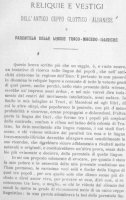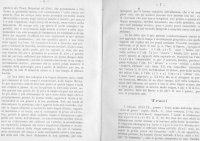Ајде малку во стилот на гегите. Еве што вели
МАРИО АЛИНЕИ
МАЛКУ Е ПОДОЛГО, НО ПРОЧИТАЈТЕ.
Mario Alinei is Professor Emeritus at the University of
Utrecht. He is founder and editor of
Quaderni di semantica, a journal of theoretical and applied
semantics. Until recently, he was
president of Atlas Linguarum Europae at UNESCO.
Па да почнеме.
...
another myth, within the Arian larger myth, emerged:
Pangermanism. Within the Arian superior race, the German father-founders of IE studies preferred to see the Germanic people as the supermen, the purest and the closest to the original blessed race. This is also why the continental Germanic area for a long time was believed to be the Urheimat of the PIEs (Kossinna!). In turn,
the Pangermanic ideology and its political context gave rise to yet another important myth, the consequences of which are still dominating the field of IE studies: namely that of the
extremely late arrival of the Slavs: if the Germanic people were the closest to the pure Arian race, then the Slavs must certainly be the farthest ones! Despite their enormous numbers (
half of Europe is Slavic),
the Slavs were thought of having hidden somewhere, magically leaving no archaeological trace whatsoever of their presence, until in the Middle Ages they unexplainably (and quite regretfully!) emerge and swarm over Eastern Europe…
The old version of the traditional theory assumed, as is known, the ‘arrival’ of the Slavs in historical times, following their alleged “great migration” in the 5th and 6th centuries of our era, from an unknown area. It claimed that this is the reason for their large extension and phenomenal homegenity. Even though
this radical thesis is now maintained only by a minority (represented by Schenkerwould)
Now, from a geolinguistic point of view,
Southern Slavic must form the earlier core, while the two Northern branchings must be a later development, each with its proper history and identity. No other explanation is possible,
unless one challenges the very raison d’etre of IE and Proto-Slavic reconstruction, besides common sense.
When, for example, John of Ephesos, bishop of Constantinopolis under Justinian (527-65) mentions the innumerable raids into the Bizantine territori by
“the damned people of the Slavs” he damns them because they were still pagan, and not because they are ‘arriving’! And when, in his
[FONT=TimesNewRoman,Italic]De rebus Gethicis [/FONT]
Jordanes describes the location of the Venedi, and writes that they inhabited the area “From the source of the Visla riverand on incommensurable expanses”, he does not give the slightest indication of a recent arrival of theirs, but simply describes a statu quo. And I challenge Slavic specialists to find any indication of a recent arrival of the Slavs in their area in other medieval sources.
...
how an archaeologist can advance the hypothesis of a massive expansion that involves half of Europe, and is capable of entirely changing its linguistic identity, without the slightest archaeological evidence.
The Slavic postglacial area would then form a kind of triangle, the
Southern corner of which would correspond to Macedonia, the western frontier of which would pass along the Italid Dalmatia, and delimit the rest of ex-Yugoslavia, Hungary, ex- Czechoslovakia, and Southern Poland, and the Eastern frontier of which would delimit Bulgaria, Romania, Western Ukraine, Belorussia and parts of Middle Russia.
Also for the birth of metallurgy the Slavic Balkanic area must have played a fundamental role.
And in this new context, the most ancient metallurgical cultures of Europe, that of the Balkanic area, must be seen as Southern Slavic
ЕТЕ ТАКА, ЗНАЧИ НЕ ВИКАЛЕ СИТЕ ВО СВЕТОТ ДЕКА ГЕГИТЕ СЕ ФРАЕРИ :pos2: :pos2: :pos2: 










